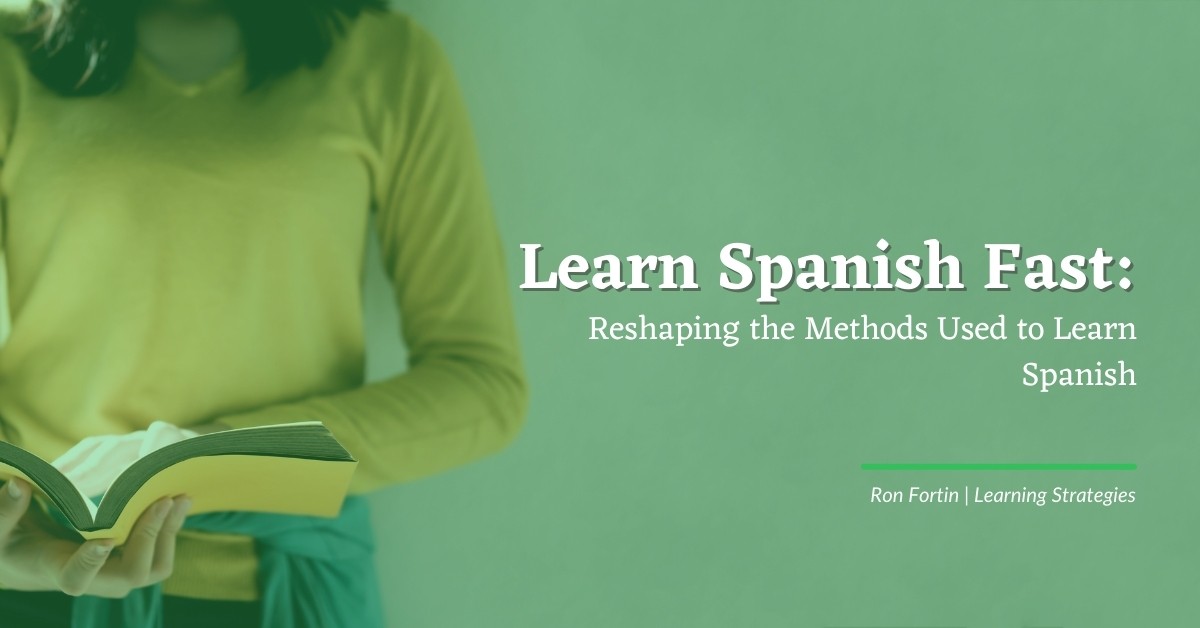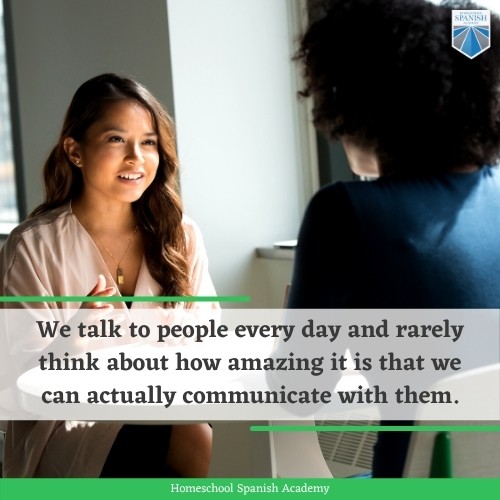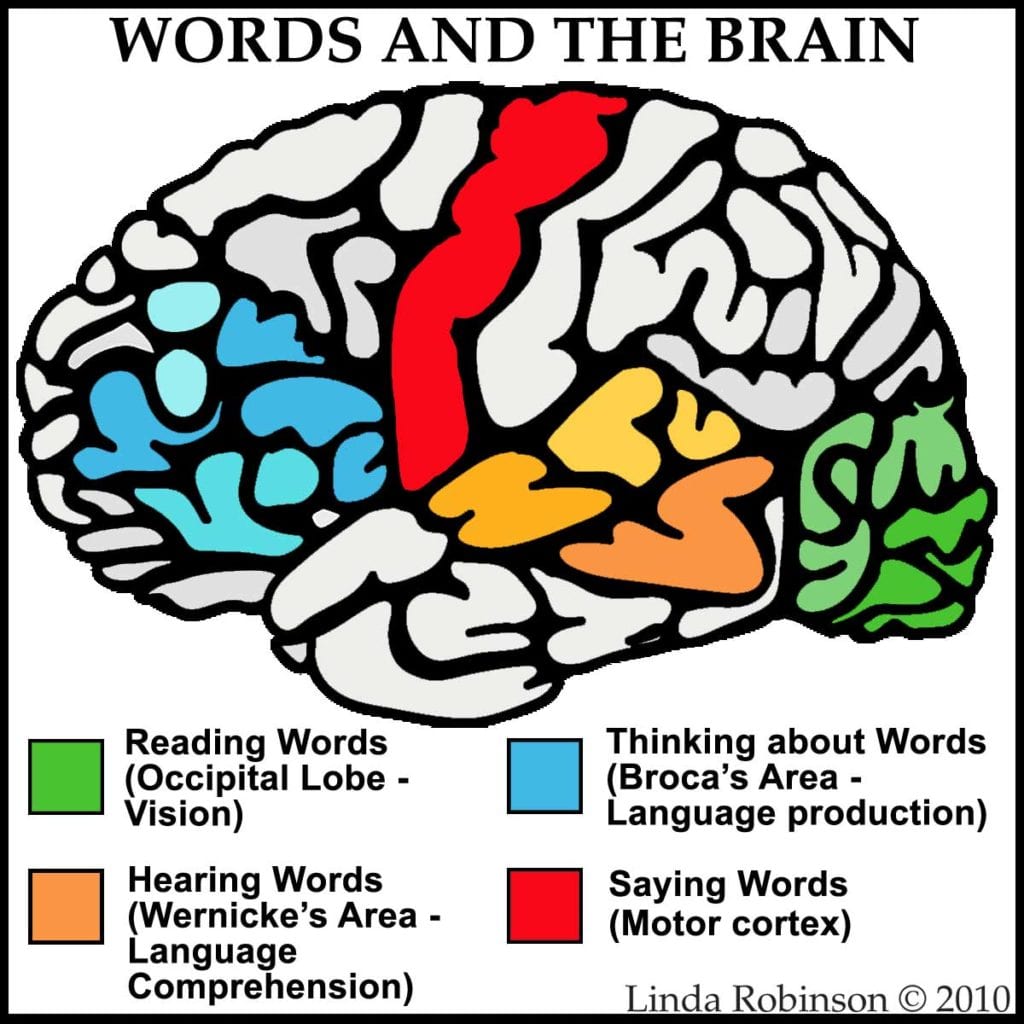
Learn Spanish Fast: Reshaping the Methods Used to Learn Spanish
We talk to people every day – on the street, in the store, at home – and rarely think about how amazing it is that we can actually communicate with them. We constantly take for granted our ability to converse with those around us.
Now, 58.9 million of our neighbors here in the States are Spanish-speakers. Imagine that for a moment. There is an impressive language barrier between us and almost 20% of the population. How can we bridge that gap and begin to communicate more fully with our neighbors? Well, we can start by perfecting our Spanish-learning process.
Why the Traditional Methods of Learning Spanish are Flawed
Let’s think about how most of us have tried to learn Spanish…
- Workbooks with reading and writing exercises
- Large classroom settings
- Non-native Spanish speaking instructors
- Software (free or paid) with audio recordings
- Classes only 1 or 2 times per week
Did one of these methods work for you? More than likely, they did not because these techniques utilize the wrong parts of the brain.

Flaws in the Traditional Methods
Remember the list we made of the different ways we normally try to learn Spanish? Those are what we are going to call ‘traditional learning methods.’ Let’s explore further to see where exactly they went wrong.
If you’re like me and went to public school, the norm was that you took about a year of foreign language in middle school before it became a requirement in high school. Since I studied in Texas, Spanish was the most logical choice of a second language. However, it wasn’t like I had much of a choice since German and French were my only other options. So, I began to study Spanish only because of its practicality. Now, on a personal level, Spanish was my least favorite class. I was a pretty good student overall, but matter how hard I tried, I couldn’t do better than a B- (yes, I know – I was an overachiever).
At some point, I owned the fact that I wasn’t good at learning languages and just gave up. I stopped trying, which was quite contrary to my personality.
Looking back, I can point to several things that probably held me back.
Common Learning Errors
- Large Classes: I was in a 5A district, studying at a high school of 5000+ students. My graduating class was about 1000 students. In other words, the classrooms were consistently filled to capacity.
- Limited Attention: Due to the high student count, how much attention could one teacher realistically give to any one student? How does anyone stay focused when they’re just another face in the crowd?
- Limited Practice: Our classes, if I remember correctly, were approximately 50 minutes. They later shifted to an hour and twenty minutes in high school. Within those 80 minutes, I experienced about 10 minutes of actual application time. However, we weren’t speaking with actual native speakers. Instead, we stammered broken phrases to other non-Spanish speakers for a couple of minutes until we got distracted by a more interesting topic.
- Workbooks: Given the limited class practice time, most of the actual Spanish work was assigned as homework. This meant that we mainly learned about the reading and writing rules of the Spanish language in class, and perfected them (or at least attempted to) outside of class. I would actually argue that my reading and writing got pretty decent, but I couldn’t speak the language if my life depended on it.
Wrong Reinforcement
In hindsight, it’s clear that my Spanish journey was flawed since day one. I was learning how to read and write in Spanish, but I barely flexed my auditory & speaking muscles. The lessons, activities, and practice works were constantly reinforcing reading and writing in Spanish, nothing else.
Now let me be clear. I’m definitely not saying that software and textbooks that focus on those learning areas are insignificant. I truly believe they can be helpful. However, I’m simply saying that they are only one part of a much bigger picture. We need various tools to activate the key areas of the brain that will help us effectively learn Spanish fast.
Before we can begin to learn Spanish fast, we must have a better understanding of how the brain functions when learning a language.
How the Brain Works
The brain is a very complex organ in the human body. It controls everything we do. Whether that’s reading, writing, or speaking, the brain has to be trained, over time, to know how to complete those tasks.
Although the brain is much more complex than what we can delve into here today, it is clear from looking at this diagram that different language functions are primarily controlled by distinct areas of the brain.
What this shows us is that when we try to learn a language with just reading or writing exercises, it isn’t very effective because we aren’t exercising the part of the brain that controls speech. We are learning only half of what we need to become fluent in Spanish.
In other words, as a learning audience, we have been studying and learning Spanish incorrectly.
Brain Tasks
In a nutshell, our brain accomplishes any task by firing or sending electrical signals to different regions of the brain. These signals then travel through the body to the muscles that you want to use. Let’s say, for example, you want to say something. Your brain would first send out signals to different parts of the brain to recall the words and sentence structure you need. Then, it would signal your muscles to move correctly and get your vocal cords to produce the correct sound. All at the same time. Whoa! That’s a lot of tasks! No wonder it’s a hard thing to learn, huh?
Becoming More Efficient
These electrical signals we just talked about travel along something called ‘axons.’ However, the further the signals have to travel, the more energy they lose. Luckily, our axons are wrapped in a fatty substance called myelin, which helps maintain energy. You can think of axons like the coaxial cables of the brain.
When we’re younger, this myelin fatty substance is quite thin. The more we ‘practice’ specific tasks, though, the more resources your body dedicates to that axon and thickening the myelin. This, in turn, produces a very well insulated pathway for that particular electrical signal. In this TED video that explores the idea further, they refer to it as something “similar to an information superhighway.”
Logically speaking, as a signal becomes fast and more efficient, the result should appear quicker and better, right?
Targeting the Correct Objective
The answer is yes. But to make that signal faster, we need to practice the right tasks. If we want to create efficient pathways in our brain for speaking Spanish but never say a word, those pathways will never develop. We must target the correct objective when we learn Spanish.
At this point, I can probably conclude that I did not excel in high school Spanish because the curriculum and activities were creating and reinforcing axon pathways in my brain specifically for reading and writing. Had I been able to converse and develop pathways for speaking, I would have been more proficient in communicating in Spanish. There’s a common saying, “practice how you’ll execute,” and it rings true for language learning.
More Than Practice: Quality and Effectiveness
The video I previously mentioned goes on to point out that although practice is necessary to build up the myelin along your axons, it’s not the only thing needed to develop mastery over any skill, including speaking Spanish.
This explains why repeating a bunch of words randomly or without context, often does NOT lead to Spanish fluency. So, we have talked about how traditional learning methods are ineffective. What’s the correct way to learn Spanish quickly, then?
If you’d like to learn more about how the brain works, check out this TED video. Or watch this one to discover how to learn Spanish in only 6 months! These videos go more in-depth with the ideas discussed in this blog.
How We Do It:
At Spanish Academy, we’ve developed a unique method of teaching Spanish that centers around five key concepts represented by the acronym RAMMA. These letters stand for:
Relevance
Attention
Meaning
Memory
Accountability
Relevance
Our classes are either 1-on-1 or 2-on-1, giving you the ability to talk about things that are relevant to your life. This does a couple of things. First, it gives your brain a point of reference and allows you to contextualize and process what’s going on. It also aids in pushing the information into your long term memory.
Attention
Because the information is relevant to your experience, you’re naturally more engaged in the class. Studies show time and time again*** that when you are attentive, your brain is more likely to retain the information.
Meaning
Now that your classes are relevant to your experiences, you can learn Spanish through a lens you are familiar with. This gives meaning and perspective to your Spanish learning journey. Instead of just learning a bunch of generic words and phrases that you might never use, you will actually learn useful and meaningful vocabulary, grammar, and conversation skills.
Memory
Just like being attentive allows you to store information in your long-term memory, giving meaning to the context allows you to do the same. All that context, perspective, and meaning lets you process and store this information a lot faster than if you were to just try and memorize things a list of words.
Accountability
Of course, repetition plays an important part in language learning. That’s where the last letter comes in: A for accountability. To continue with something that’s difficult, you need guidance and direction – or accountability. This is one of the most important things that people forget about or don’t include in their learning regiment because they don’t think it’s important. However, it can actually shorten your learning curve by avoiding mistakes that you would otherwise make. Think of your Spanish teacher (or some accountability partner) like Google Maps. You’re still able to get to where you need to go without Google Maps, but it’s a lot faster if you have it guiding you along the way.
Learn Spanish Fast
In my travels, there’s a joke that I’ve encountered many times over – as I’m sure many of you probably have. It goes something like this…
“What do you call someone that knows three languages?”
“Trilingual.”
“What do you call someone who knows two languages?”
“Bilingual.”
“What do you call someone who knows one language?”
“American.”
Crazy right? But, there’s some truth to the joke. In many parts of America, there are people who feel that other languages should not be spoken or used in public.
Without getting political, I think one of the reasons for this, is that people find it really hard to learn Spanish or any other language. And it is challenging, don’t get me wrong. But it can be easier than people make it out to be if they practice and learn Spanish correctly.
So, it’s time to throw out those traditional methods and start learning Spanish effectively today. Click here to learn even more about how our program can help you learn Spanish fast, or go ahead and sign up for a free class. We can’t wait to see you in class!

Want more free Spanish lessons, fun content, and easy learning strategies? Check these out!
- All About Adverbial Clauses in Spanish
- How to Immerse Yourself in Spanish While at Home
- Ver Conjugation: Free Spanish Lesson, Exercises, and PDF
- What Are the Different Levels of Language Proficiency?
- What Is And How To Master AP Spanish Language
- What Does it Actually Take to Become Fluent in Spanish?
- All You Need to Know About Spanish as a Second Language
- Discover the Joy of Learning Spanish with Summer Fun Activities
Today, he enjoys innovating and driving the business forward.
- Ride the Wave: Why Bilingualism in English and Spanish Is Your Ticket to Success - June 12, 2024
- It’s Our Birthday! Homeschool Spanish Academy Turns 10 - August 10, 2020
- Learn Spanish Fast: Reshaping the Methods Used to Learn Spanish - March 5, 2019





